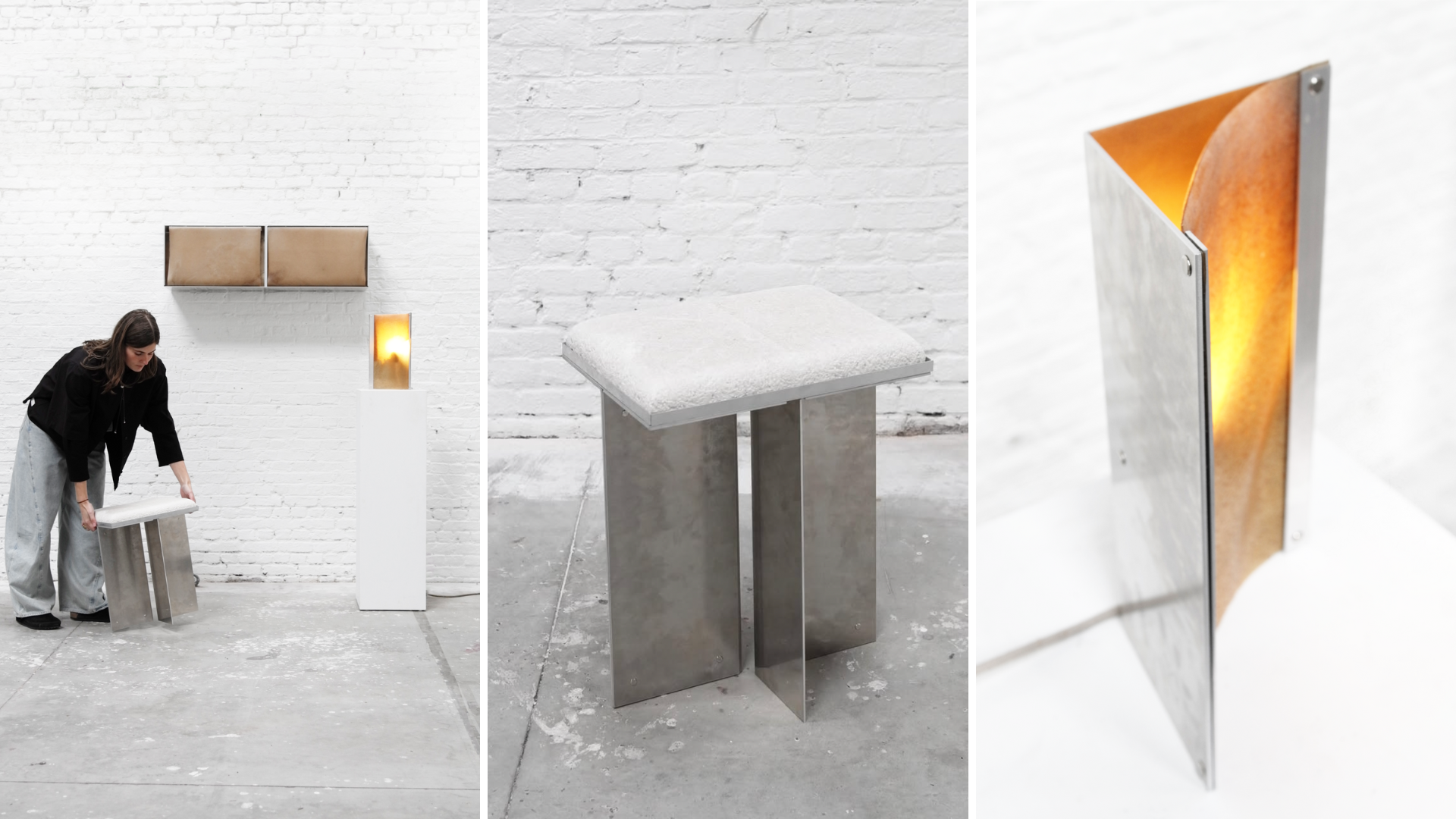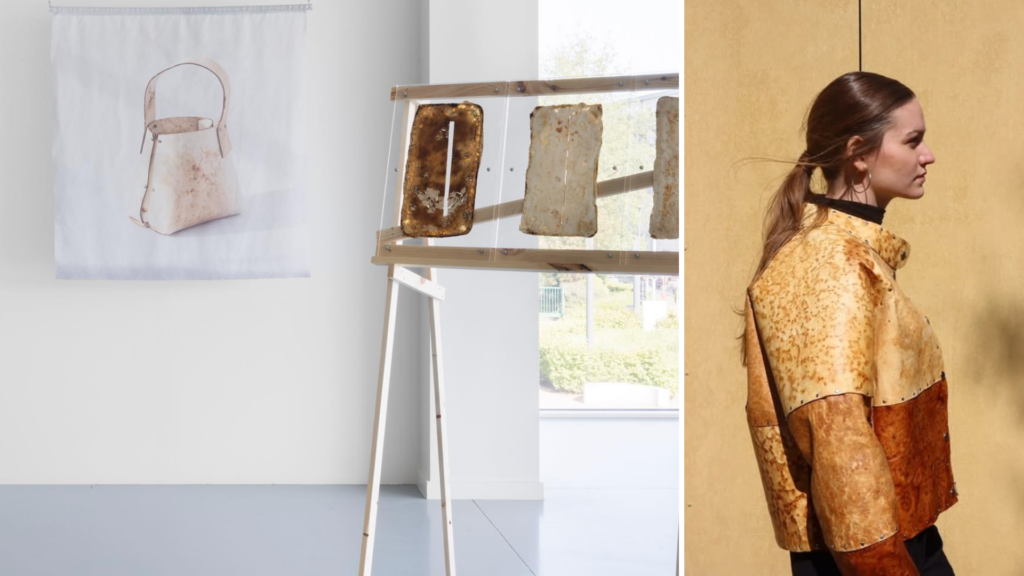Amongst a new generation of individuals spearheading sustainable textile innovation, the Vrije Universiteit Brussels’ Mycelium Matters team presented their mycelium skin designs at Isola Design Festival during Milan Design Week 2025.
The Brussels-based team, led by Professors Elise Vanden Elsacker and Eveline Peeters, have received funding from FWO Flanders MycoMatters project for the research and development of their eco-conscious fabric project 'Fungal Skins: Macro'.
The festival debuted the riveted multi-tonal jacket designed collaboratively by PhD researchers Anouk Verstuyft and Annah-Ololade Sangosanya. Citing inspirations such as Neri Oxman, the pair pinpoint the team's space "at the intersection of science, fashion, design and art."
First of its kind
The first-ever living material with self-repairing capabilities, mycelium skin is formed through a process known as surface fermentation, where the fungus is grown on the surface of a liquid pre-culture.
The technique combines an agar plug and a liquid medium to form a homogenous mycelium that is incubated and harvested in a growth room. A patented proprietary technique is applied post-processing to make the fabric extra malleable and workable.
The team ensures that everything is organic and degradable, avoiding any toxic chemicals. The final sheets of mycelium skin measure at 60 cm by 50 cm in size, allowing for ample room to prepare clothing, furniture, and accessories. The full harvesting process takes around three weeks.

Shelves, footstool, and a lamp constructed with mycelium. Credit: @anoukverstuyftworks / Instagram
Leather alternative
The fabric has been compared to leather or faux-leathers. The skin is treated with a coating that makes it water-repellant. However, overt exposure to water may damage the fabric, similarly to leather. Sangosanya likens it to working with standard synthetic leather. Experimenting with various thicknesses and species of fungi has given the team the flexibility to play with aesthetic methods.
The fabric can mimic velvety textures, such as a suede displayed on a footstool built by Verstuyft in her furniture collection. As mycelium derives from fungi, it is a major step forward for scientists and designers working towards a greener future for fashion.
With the fungi self-colouring to a dark reddish-brown pigment using a remediation process of dye wastewater from the textile industry, the options are endless. This "win-win situation" eliminates the toxic elements from dyes, "thereby sanitising and purifying a wastewater stream and our environment."
The future of fungi
In the future, Sangosanya and Verstuyft aim to transition the fully inert material into something "still alive or with some reactivating units embedded within the material that would allow regrowth."
Verstuyft's focus is on developing the textile visually to become industry-ready after the four years of the project. Sangosanya's speciality concerns adapting the enzymes within mycelium to degrade textile waste and add to the recycling process.
The team wants to use this initial prototype to suppress societal taboos surrounding fungi. They hope to shift people's perspectives in a European culture that associates the organism "with decay or rot" and encourage them to accept the "unique and crucial organism."
With fashion giants Stella McCartney, Hermès and Adidas already testing the waters, mycelium might be the next big thing and another win for Belgium in the fashion sphere.

